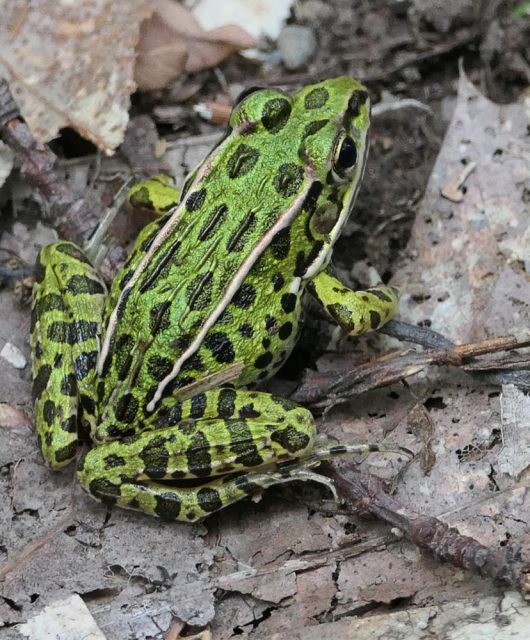As we transition into winter in Ontario, you might think the time is over for seeding restoration projects. But in fact, this is a great time to get your seed mix planted!
Dormant season seeding is also called frost seeding, winter seeding or snow seeding. They all refer to seeding in the late fall and early winter. The idea is to get the seed down into the soil before it freezes completely. This can happen when there is snow cover or just bare soil. As long as vegetation has been removed, and the soil is prepped, it can be seeded.
Hand broadcasting and drill seeding can be done with great success at this time of year (from October to December, approximately). A good temperature guideline for successful frost or dormant seeding is when the soil temperature is at about 4 degrees Celsius (this is different from air temperature)! Seeding in this colder season eliminates accidental germination of your seed, which can happen on a warm day and cause your plants to die-off once another cold snap happens (for example, September often marks the transition of seasons in the Great Lakes region and can have temperature changes from warm to cold days). The planting seasons in your area may be slightly different.
Cold Moist Stratification
The colder fall and winter conditions help break seed dormancy and promote the germination of many of our native seeds that require CMS, or (cold moist stratification). This is the normal process many native seeds go through, where the seed coat is moistened, frozen, and cracked with water, ice and soil. This triggers the first stage of germination. Once the soil is defrosted, and temperatures are warm enough for plant growth, the seed will get the message to start growing. Depending on the species, it may take one winter or two to see the plant emerge above ground. “Sleep, creep, leap” is typical of the pattern of many species that require this time frame; the first year they ‘sleep’, the second year their roots ‘creep’ underground, and the third year they ‘leap’, or grow to their full potential above ground.

Fall Seeding
Even if there is no snow, seed can be dropped on soil that isn’t completely frozen. Then the soil should be raked or rolled. Once the ground freezes, the seed will have good ‘soil to seed contact‘ thanks to the freeze-thaw cycle, with the seed working its way into the soil when the ground thaws slightly. Amendments like kitty litter or sawdust can be added to the seed mix to help you see where the seed is placed at a planting site.

Benefits of Snow
With snowfall comes moisture, which help adhere the seed to the ground and prevent it from being blown away. It also makes it easier to see where seed has fallen if you are hand seeding. The snow offers a whole host of benefits, from insulating the ground to adding moisture to the soil for spring. Next time you see some snow, think about all of the possibilities it offers for native seed restoration!

In Conclusion
Dormant season seeding is a great seeding method for two main reasons, one being that seeds can start growing as soon as conditions are favorable in spring, giving them a head start early in the season. Second is that there will be ample moisture for these seeds to grow in the spring. If you hand broadcast in the spring, and your soils are mucky and wet, you might not be able to seed until the spring rains have finished, missing out on favourable moisture for seed.
Have you ever done a winter or frost seeding? Tell us below!
Reference
Fall and Winter Seeding — NRP – Ecological Restoration




